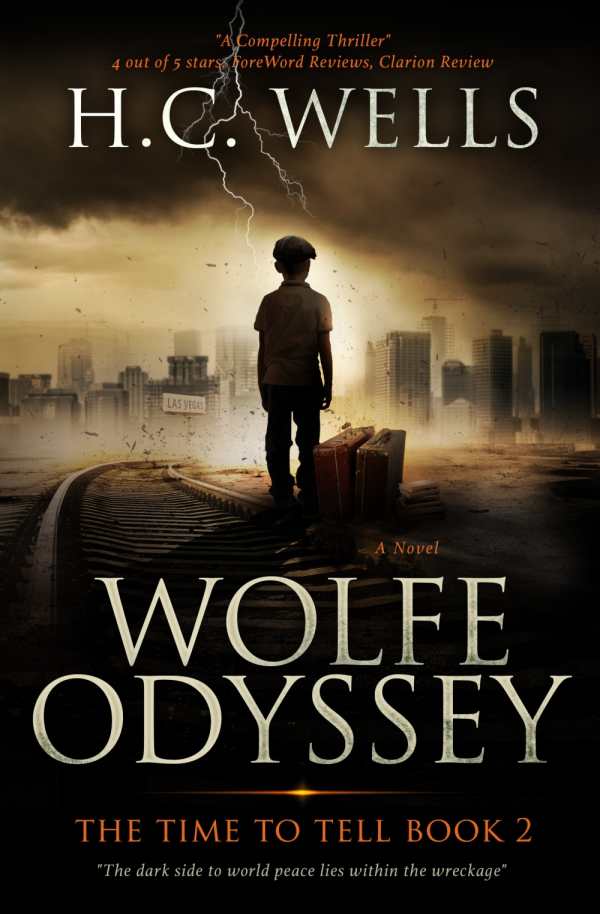Wolfe Odyssey
The Time to Tell
Wells’s ability to connect and reinterpret historical events makes this sci-fi thriller scarily realistic.
H. C. Wells’s Wolfe Odyssey, the second installment in the series of The Time to Tell books, is the story of Eddie Coolidge and his seven-year-old adopted son, Doll. The pair are on a search for answers about Doll’s true origins when they find themselves fleeing from supernatural and governmental threats. Set in 1951, their journey takes them from Devil’s Gulch, Maine, to Area 51 in Nevada.
This pulse-pounding thriller starts off with a bang. On Doll’s seventh birthday, one of his candles refuses to go out—“just like his other birthdays,” exclaims one of his friends. After setting this spooky stage, the suspense continues as the news barks about flying saucers in Nevada, and Doll has recurring nightmares about being chased by a wolf.
After learning that he is not Eddie’s biological son, Doll badgers Eddie with questions about his real father. Eddie takes his son down to the beach where, after World War II, the German ship carrying the boy wrecked. There they find the crib contraption in which Doll floated ashore. As they discover clues around them, the weather worsens, creating a huge wolf-man made of clouds that stalks father and son.
Since Doll already has nightmares of wolves, the supernatural wolf-man seems out of place in the chase scene (as well as other appearances). Amid all the lupine references, the appearance of a storm-wolf detracts from an otherwise successful science-fiction endeavor. Nevertheless, Wells adeptly uses historical facts and his own fiction to keep the pages turning as he reveals how flying saucers and secret government plots connect to the story of Eddie and Doll.
Comparing the foliage to, “humanoids, spiked up in statues,” and “black monsters” lends a suitable air of portent to the book. Indeed, the negative consequences of progress are reinforced by everything from the wolves in Doll’s nightmares to creepy descriptions of plants to dire predictions about the future. With his fondness for mentioning things like Pribil automobiles and Nehi soft drinks, the author conjures up nostalgic specifics of America’s past. The introduction of brand names, coupled with Wells’s ability to connect and reinterpret historical events to fit his plot, makes the book eerily realistic.
Eddie and Doll are fully realized characters with a real father/son bond. Their affection for one another feels genuine, and functions as a nuanced facet of their characterizations that helps maintain the narrative’s momentum: how will their bond be tested, and will it endure the strain? A thriller in multiple ways, this book is a must-read for sci-fi lovers.
Reviewed by
Jill Allen
Disclosure: This article is not an endorsement, but a review. The publisher of this book provided free copies of the book and paid a small fee to have their book reviewed by a professional reviewer. Foreword Reviews and Clarion Reviews make no guarantee that the publisher will receive a positive review. Foreword Magazine, Inc. is disclosing this in accordance with the Federal Trade Commission’s 16 CFR, Part 255.

